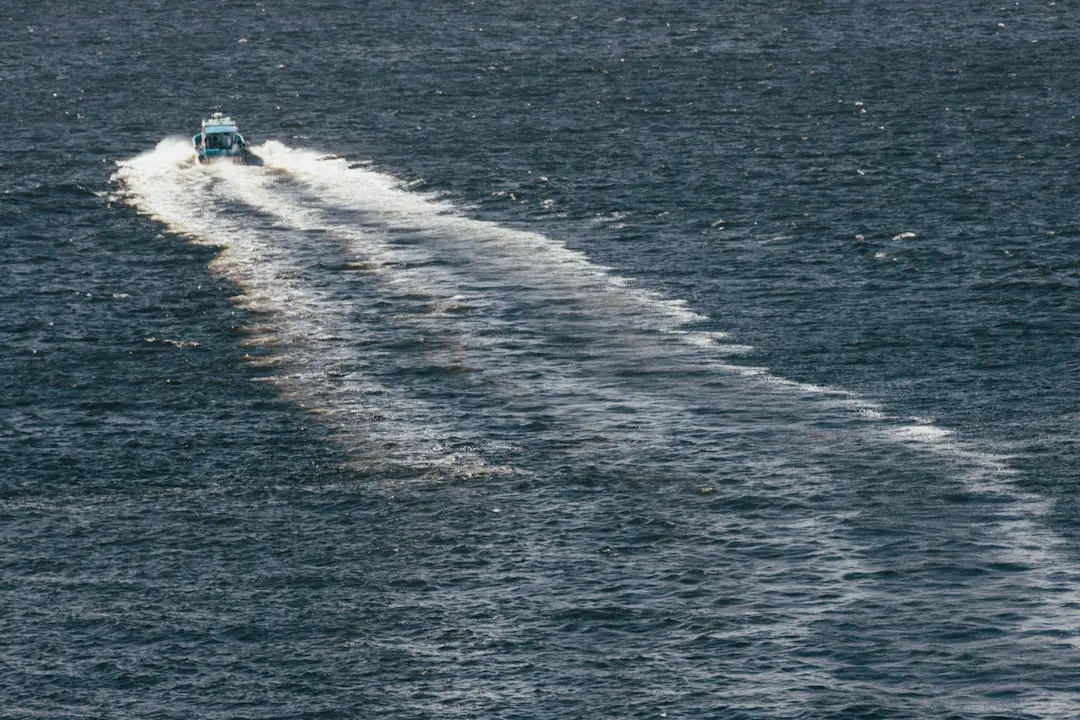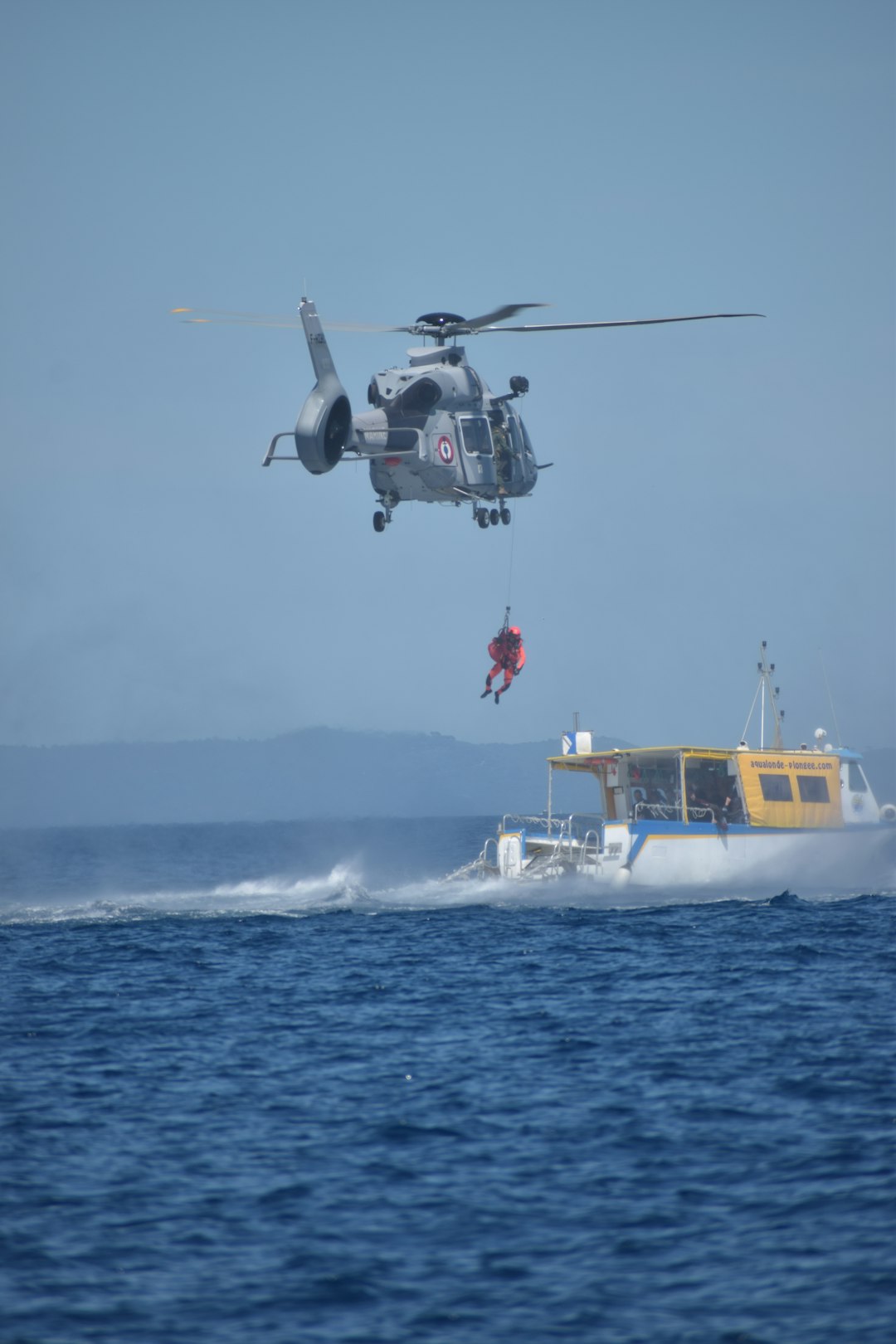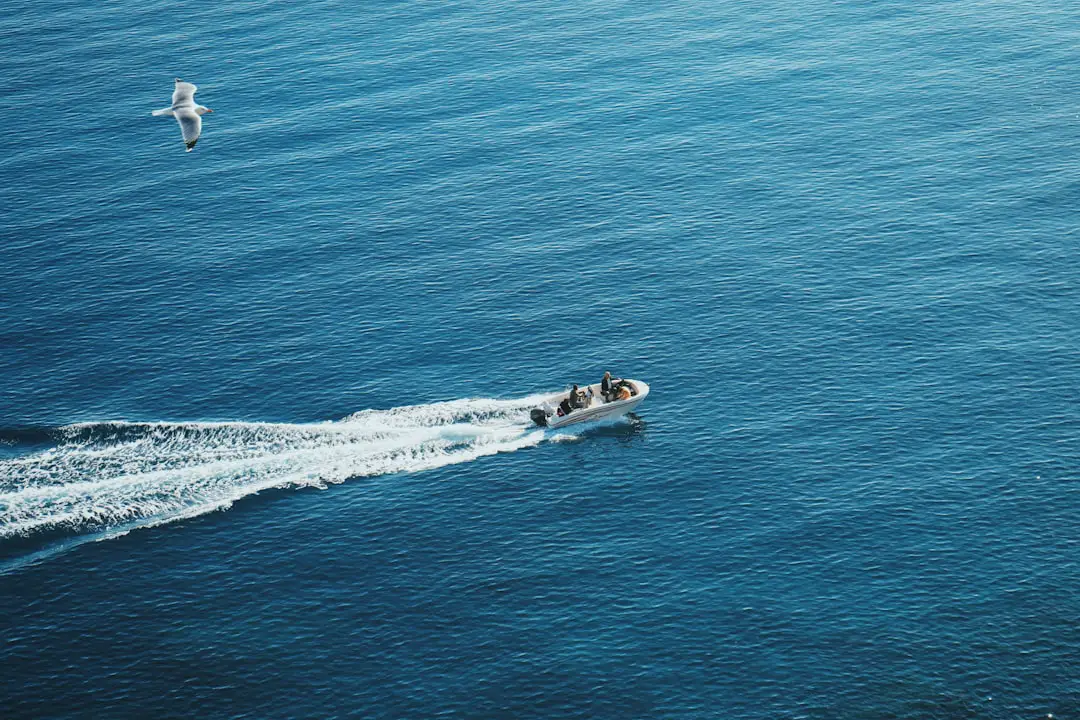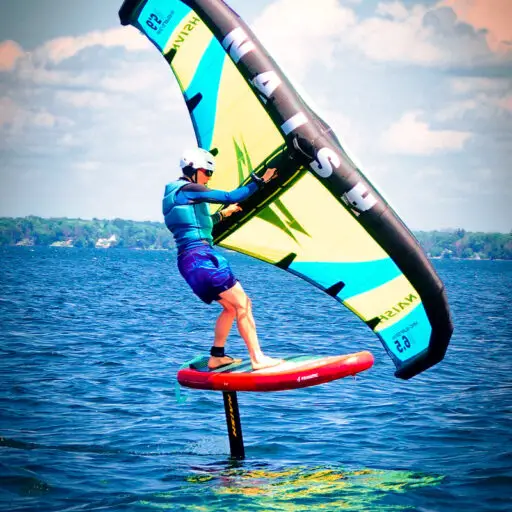Support our hydrofoil educational content for free when you purchase through links on our site. Learn more
What Is the Top Speed of a Navy Hydrofoil? 🚀 (2025)
Ever wondered how fast a Navy hydrofoil can really fly over the waves? These sleek vessels aren’t just boats—they’re waterborne rockets, designed to skim the surface with astonishing speed and agility. From the legendary USS Pegasus to cutting-edge prototypes, Navy hydrofoils have pushed marine engineering to its limits. But what’s their actual top speed, and why did the Navy invest so heavily in this technology only to retire it decades later? Stick around, because we’re about to unveil the secrets behind these maritime speed demons and explore their thrilling legacy.
Here’s a teaser: the fastest Navy hydrofoils could reach speeds up to 55 mph (48 knots)—that’s faster than many recreational speedboats and rivaling some military craft. But speed isn’t the whole story. We’ll dive into the physics, history, and future of hydrofoils, revealing why these vessels soared and why they eventually faded from naval fleets. Ready to ride the wave of knowledge?
Key Takeaways
- Navy hydrofoils achieve top speeds up to 55 mph (48 knots) by lifting their hulls out of the water to reduce drag.
- The Pegasus class was the fastest and most famous US Navy hydrofoil, combining speed with missile firepower.
- Hydrofoil technology offers speed, stealth, and maneuverability, but also comes with high costs and operational challenges.
- While the US Navy retired hydrofoils in the 1990s, other countries and civilian markets continue to innovate with this tech.
- Hydrofoil principles have inspired recreational sports like hydrofoil boarding, with brands like Lift Foils, Slingshot, and Naish leading the way.
Ready to explore hydrofoil gear or learn more? Check out our Hydrofoil Equipment Reviews and Hydrofoil Basics for expert insights and top picks!
Table of Contents
- ⚡️ Quick Tips and Facts: Your Need-to-Know Hydrofoil Lowdown!
- 🌊 The Need for Speed: A Deep Dive into Naval Hydrofoil History & Development
- 🚀 Unveiling the Beast: What Exactly Is a Navy Hydrofoil, Anyway?
- 🎯 Mission Critical: Why Did Navies Chase Hydrofoil Technology?
- 💨 The Physics of Flight on Water: How Hydrofoils Defy Drag & Hit Blistering Speeds
- 🏎️ The Speed Demons: Unpacking the Top Speeds of Iconic Naval Hydrofoils
- ⚙️ Beyond the Numbers: What Really Impacts a Hydrofoil’s Performance?
- 🚧 The Hydrofoil’s Achilles’ Heel: Why Didn’t They Conquer the Seas?
- 🤔 Modern Marvels: Are Navies Still Riding the Hydrofoil Wave?
- 🛥️ From Warships to Water Taxis: The Enduring Civilian Hydrofoil Legacy
- 🔮 The Future of Fast Ferries & Naval Innovation: What’s Next for Hydrofoils?
- ✅ Conclusion: The Legacy of Speed and Innovation
- 🔗 Recommended Links: Dive Deeper!
- ❓ FAQ: Your Burning Hydrofoil Questions Answered
- 📚 Reference Links: Our Sources & Further Reading
⚡️ Quick Tips and Facts: Your Need-to-Know Hydrofoil Lowdown!
You’ve heard the whispers, seen the sleek lines, and maybe even caught a glimpse of a Navy hydrofoil zipping across the water. But what exactly is a hydrofoil, and how fast can these underwater speed demons really go?
Here’s the quick and dirty:
- Hydrofoils are essentially boats that fly! They use wing-like structures called foils that lift the hull out of the water at high speeds, reducing drag and boosting efficiency.
- Think of it like a surfboard on steroids. We’re talking about speeds that can rival some of the fastest boats on the planet.
- The Navy has a long history with hydrofoils, dating back to the 1950s. They were initially seen as a game-changer for fast attack craft and reconnaissance missions.
- But there’s a catch. Hydrofoils are complex and expensive to build and maintain, which ultimately limited their widespread adoption.
Want to know more? Keep reading to dive deeper into the fascinating world of naval hydrofoils!
🌊 The Need for Speed: A Deep Dive into Naval Hydrofoil History & Development

The idea of a boat that could “fly” over the water has captivated inventors and naval strategists for centuries. But it wasn’t until the mid-20th century that the technology finally started to take off.
Here’s a quick timeline of the key milestones:
- 1869: British inventor Emmanuel Denis Farcot patents the first hydrofoil design.
- 1919: Alexander Graham Bell’s HD-4 hydrofoil sets a world marine speed record of 71 mph (114 km/h).
- 1950s: The US Navy begins experimenting with hydrofoils, seeing their potential for fast attack craft and reconnaissance.
- 1960s-1970s: The US Navy develops and deploys several experimental and operational hydrofoil vessels, including the USS High Point (PCH-1), USS Flagstaff (PGH-1), and USS Tucumcari (PGH-2).
- 1977-1993: The US Navy operates the Pegasus class hydrofoils, which were designed for high-speed patrol and missile attack missions.
- 1990s-Present: The US Navy largely abandons hydrofoil technology due to cost and complexity, but other countries, like Russia, continue to develop and operate hydrofoil vessels.
The story of naval hydrofoils is a fascinating one, filled with innovation, ambition, and ultimately, some hard-learned lessons. We’ll explore the reasons behind the Navy’s embrace and eventual abandonment of this technology in more detail later on.
🚀 Unveiling the Beast: What Exactly Is a Navy Hydrofoil, Anyway?
Imagine a boat with wings! That’s essentially what a hydrofoil is. These underwater wings, called foils, are attached to struts that extend below the hull. As the boat picks up speed, the foils generate lift, lifting the hull out of the water.
Here’s how it works:
- Foils: These are the key to the hydrofoil’s magic. They are shaped like airplane wings, creating lift as they move through the water.
- Struts: These are the supporting structures that connect the foils to the hull.
- Hull: The main body of the boat, which is lifted out of the water by the foils.
The result? A boat that can glide over the water with minimal drag, reaching speeds that would be impossible for a traditional hull.
Think of it like this: A regular boat is like a car driving on a dirt road. It’s slow and inefficient, constantly fighting against friction. A hydrofoil is like a car driving on a smooth highway. It’s fast and efficient, with minimal resistance.
🎯 Mission Critical: Why Did Navies Chase Hydrofoil Technology?
The Navy’s interest in hydrofoils stemmed from a desire for speed, stealth, and maneuverability. These advantages made hydrofoils ideal for a variety of missions, including:
- Fast attack craft: Hydrofoils could quickly strike enemy ships or coastal targets.
- Reconnaissance: They could gather intelligence on enemy movements without being easily detected.
- Anti-submarine warfare: Their speed and maneuverability made them effective at hunting submarines.
- Coastal patrol: They could patrol coastal waters and intercept smugglers or other illegal activities.
The Navy saw hydrofoils as a way to gain a significant advantage over traditional surface ships. They were faster, more agile, and could operate in shallower waters.
💨 The Physics of Flight on Water: How Hydrofoils Defy Drag & Hit Blistering Speeds
The secret to a hydrofoil’s speed lies in its ability to reduce drag. Here’s how it works:
- Drag: This is the force that opposes the motion of an object through a fluid (like water). The more drag an object has, the slower it will move.
- Hull Drag: A traditional boat’s hull creates a lot of drag as it moves through the water. This is because the hull is constantly pushing against the water.
- Hydrofoil Lift: As a hydrofoil gains speed, the foils generate lift, lifting the hull out of the water. This reduces the amount of surface area in contact with the water, significantly decreasing drag.
The result? A hydrofoil can reach speeds that are far greater than a traditional boat of the same size.
Think of it like this: A regular boat is like a car driving through a thick mud puddle. It’s slow and inefficient, constantly fighting against the resistance of the mud. A hydrofoil is like a car driving on a smooth, paved road. It’s fast and efficient, with minimal resistance.
🏎️ The Speed Demons: Unpacking the Top Speeds of Iconic Naval Hydrofoils
So, how fast can these underwater speed demons really go? It depends on the specific design and size of the hydrofoil, but some of the most iconic naval hydrofoils have achieved truly impressive speeds.
The Legendary USS Pegasus (PHM-1) Class: A Fleet of Fast Attack Craft
The Pegasus class hydrofoils were the US Navy’s primary hydrofoil vessels from 1977 to 1993. These sleek, fast attack craft were designed for high-speed patrol and missile attack missions.
- Top Speed: Up to 55 mph (48 knots)
- Range: At least 750 miles
- Armament: 76mm main gun and up to eight Harpoon anti-ship missiles
The Pegasus class hydrofoils were a technological marvel, but they were also expensive to operate and maintain. This ultimately led to their retirement in 1993.
The Experimental Trailblazers: USS High Point (PCH-1) & USS Plainview (AGEH-1)
The US Navy experimented with several hydrofoil vessels in the 1960s and 1970s, including the USS High Point (PCH-1) and USS Plainview (AGEH-1). These vessels were designed to test the limits of hydrofoil technology and explore its potential for various naval missions.
- USS High Point (PCH-1): The Navy’s first hydrofoil patrol boat, built in 1963.
- USS Plainview (AGEH-1): The largest hydrofoil built at the time, designed for mine countermeasures.
These experimental vessels paved the way for the development of the Pegasus class hydrofoils. They also helped the Navy to better understand the challenges and limitations of hydrofoil technology.
The Patrol Gunboats: USS Flagstaff (PGH-1) & USS Tucumcari (PGH-2)
The USS Flagstaff (PGH-1) and USS Tucumcari (PGH-2) were two patrol gunboats built in the 1960s. They were designed for coastal patrol and anti-submarine warfare missions.
- Top Speed: Up to 40 mph (35 knots)
- Armament: 40mm gun and torpedoes
These vessels were relatively small and had a limited range, but they were still capable of impressive speeds. They were also relatively inexpensive to operate, making them a good option for coastal patrol missions.
The Soviet Speedsters: A Glimpse at International Naval Hydrofoils
The Soviet Union was also a major player in the development of naval hydrofoils. They developed a variety of hydrofoil vessels, including fast attack craft, patrol boats, and even passenger ferries.
- Soviet Hydrofoils: These vessels were often armed with missiles and torpedoes, making them a formidable force. They were also known for their speed and maneuverability.
The Soviets had a strong tradition of naval innovation, and their hydrofoils were a testament to their engineering prowess. They were a major competitor to the US Navy in the field of hydrofoil technology.
⚙️ Beyond the Numbers: What Really Impacts a Hydrofoil’s Performance?
While top speed is a key metric for any hydrofoil, it’s just one piece of the puzzle. Here are some other factors that can significantly impact a hydrofoil’s performance:
- Foil Design: The shape and size of the foils play a crucial role in determining lift, drag, and stability.
- Hull Design: The hull’s shape and size also affect drag and stability.
- Propulsion System: The type and power of the engines determine the hydrofoil’s acceleration and top speed.
- Control Systems: Hydrofoils require sophisticated control systems to maintain stability and maneuverability.
- Sea State: Rough seas can significantly impact a hydrofoil’s performance, making it difficult to maintain stability and speed.
The best hydrofoils are a delicate balance of all these factors. They need to be fast, stable, and maneuverable, while also being able to operate in a variety of sea conditions.
🚧 The Hydrofoil’s Achilles’ Heel: Why Didn’t They Conquer the Seas?
Despite their impressive speed and maneuverability, hydrofoils never achieved widespread adoption by navies around the world. Here are some of the key reasons why:
- Complexity: Hydrofoils are complex machines with many moving parts. This makes them more expensive to build and maintain than traditional surface ships.
- Cost: The high cost of building and maintaining hydrofoils was a major obstacle to their widespread adoption.
- Reliability: Early hydrofoils were prone to mechanical problems, which limited their operational availability.
- Seaworthiness: Hydrofoils can be difficult to operate in rough seas, and they can be vulnerable to damage from waves and debris.
- Limited Range: Hydrofoils typically have a shorter range than traditional surface ships, which limits their ability to operate far from shore.
The Navy’s experience with hydrofoils highlights the trade-offs between speed, complexity, and cost. While hydrofoils offered significant advantages in certain situations, they were ultimately too expensive and complex to become a mainstream naval technology.
🤔 Modern Marvels: Are Navies Still Riding the Hydrofoil Wave?
While the US Navy largely abandoned hydrofoil technology in the 1990s, other countries, like Russia, continue to develop and operate hydrofoil vessels.
Here are some of the reasons why:
- Cost-Effectiveness: Hydrofoils can be a cost-effective option for certain missions, such as coastal patrol and fast transport.
- Technological Advancements: Advances in materials, propulsion systems, and control systems have made hydrofoils more reliable and efficient.
- Strategic Advantages: Hydrofoils can provide a significant advantage in certain regions, such as the Baltic Sea or the Black Sea, where they can operate in shallow waters and avoid traditional naval defenses.
The future of naval hydrofoils is uncertain, but they remain a viable option for certain missions. As technology continues to advance, we may see a resurgence of interest in hydrofoils as a way to enhance naval capabilities.
🛥️ From Warships to Water Taxis: The Enduring Civilian Hydrofoil Legacy
While the Navy’s embrace of hydrofoils was ultimately short-lived, the technology has found a more enduring home in the civilian world. Hydrofoils are now widely used for:
- Passenger Ferries: Hydrofoils are a popular choice for high-speed passenger ferries, offering a smooth and comfortable ride.
- Water Taxis: Hydrofoils are also used as water taxis in some cities, providing a quick and convenient way to get around.
- Recreational Boats: Hydrofoils are becoming increasingly popular for recreational use, offering a thrilling and exhilarating experience.
The civilian hydrofoil market is growing rapidly, as people seek faster and more efficient ways to travel on water. Hydrofoils are a versatile technology with a wide range of applications, and they are sure to play an increasingly important role in the future of water transportation.
🔮 The Future of Fast Ferries & Naval Innovation: What’s Next for Hydrofoils?
The future of hydrofoils is bright, with ongoing innovation and development pushing the boundaries of what’s possible. Here are some of the key trends to watch:
- Electric Propulsion: Electric hydrofoils are becoming increasingly popular, offering a more sustainable and environmentally friendly option.
- Autonomous Navigation: Autonomous hydrofoils are being developed, which could revolutionize water transportation by reducing the need for human operators.
- Advanced Materials: New materials, such as carbon fiber, are being used to build lighter and more efficient hydrofoils.
- Hybrid Designs: Hybrid hydrofoils are being developed, combining the advantages of hydrofoils with other technologies, such as catamarans and trimarans.
The future of hydrofoils is full of exciting possibilities. These innovative vessels have the potential to transform water transportation, making it faster, more efficient, and more sustainable.
✅ Conclusion: The Legacy of Speed and Innovation

So, what’s the final verdict on Navy hydrofoils and their top speeds? After cruising through history, physics, and real-world applications, it’s clear that Navy hydrofoils were true marvels of maritime engineering — capable of blistering speeds up to 55 mph (48 knots), like the legendary Pegasus class. These vessels combined the thrill of flight with the power of the sea, offering unmatched speed and maneuverability for their time.
Positives:
- Exceptional speed and agility compared to traditional hulls.
- Reduced drag thanks to innovative foil designs.
- Strategic advantages in coastal patrol, reconnaissance, and fast attack roles.
- Pioneered advanced naval technology that influenced future marine craft.
Negatives:
- High complexity and maintenance costs limited operational lifespan.
- Vulnerability in rough seas and shallow waters.
- Limited range and payload compared to larger surface ships.
- Technological demands such as sophisticated control systems.
Despite their drawbacks, the Navy’s hydrofoil program was a bold experiment that pushed the envelope of naval innovation. While the US Navy retired its hydrofoils decades ago, the technology lives on in civilian ferries, recreational hydrofoils, and even new military prototypes. For hydrofoil enthusiasts and naval historians alike, these vessels remain iconic symbols of speed and ingenuity.
If you’re curious about hydrofoils — whether for military history or your next hydrofoil boarding adventure — understanding their top speeds and mechanics gives you a front-row seat to one of the coolest chapters in maritime tech. Ready to ride the wave? Dive into our Hydrofoil Basics and Hydrofoil Equipment Reviews for more!
🔗 Recommended Links: Dive Deeper!
👉 Shop Hydrofoil Boards & Gear:
- Lift Foils Hydrofoil Boards: Amazon | Lift Foils Official Website
- Slingshot Hydrofoil Boards: Amazon | Slingshot Sports
- Naish Hydrofoil Equipment: Amazon | Naish Official Site
Books on Hydrofoils and Naval Innovation:
- Hydrofoils: Design, Build, Fly by Peter M. Schweizer — Amazon
- Fast Boats and Hydrofoils by John L. Lowry — Amazon
- The Naval Institute Guide to Combat Fleets of the World by Eric Wertheim — Amazon
❓ FAQ: Your Burning Hydrofoil Questions Answered

How does a hydrofoil achieve high speeds on water?
Hydrofoils use underwater wing-like structures called foils that generate lift as the vessel moves forward. This lift raises the hull out of the water, drastically reducing hydrodynamic drag — the main force slowing boats down. With less hull in contact with water, the vessel experiences less resistance, allowing it to accelerate to much higher speeds than traditional boats. The physics is similar to how an airplane wing generates lift in air, but here it’s water doing the heavy lifting. Sophisticated control systems help maintain stability at these speeds, especially for fully submerged foils.
Read more about “How Does Hydrofoil Sailing Work? 🌊 Unlocking the Secrets of Flight on Water (2025)”
What are the advantages of using a hydrofoil in naval operations?
Hydrofoils offer several tactical and operational benefits:
- Speed and Agility: Hydrofoils can outrun many conventional vessels, making them ideal for fast attack and reconnaissance.
- Reduced Radar and Acoustic Signature: Being lifted above water reduces wake and noise, enhancing stealth.
- Shallow Water Operations: Hydrofoils can operate in shallower waters than larger ships, useful for coastal patrols.
- Fuel Efficiency: Less drag means better fuel economy at high speeds.
- Mine Avoidance: Elevated hull reduces risk from certain types of sea mines.
However, these advantages come with trade-offs in complexity and maintenance, which is why navies weigh hydrofoils carefully against mission requirements.
Read more about “Discover the Secrets of Military Hydrofoil Boats: 10 Must-Know Facts … 🚤”
Can hydrofoil technology be applied to recreational water sports like hydrofoil boarding?
Absolutely! Hydrofoil technology has revolutionized water sports, especially hydrofoil boarding (also called foil surfing or foil kiting). Riders use smaller, lightweight hydrofoil boards equipped with foils that lift them above the water’s surface, enabling smooth, fast rides even in light winds or small waves. Brands like Lift Foils, Slingshot, and Naish have popularized this sport with high-performance gear. The principles are the same as naval hydrofoils but miniaturized and optimized for fun and maneuverability. Check out our Hydrofoil Board Selection for expert reviews and tips!
What safety considerations are involved when operating a hydrofoil at high speeds?
Operating hydrofoils at high speeds requires awareness of several safety factors:
- Control and Stability: Fully submerged foils need active control systems; failure can cause sudden loss of stability.
- Obstacle Awareness: Hydrofoils ride higher but still have underwater components vulnerable to debris or shallow reefs.
- Protective Gear: Helmets and impact vests are recommended, especially in recreational settings.
- Training: Proper training is essential to handle the unique dynamics of hydrofoils.
- Environmental Conditions: Rough seas or strong currents can challenge hydrofoil stability and control.
For military vessels, rigorous maintenance and trained crews mitigate risks, while recreational riders should always respect local conditions and safety guidelines.
📚 Reference Links: Our Sources & Further Reading
- Wikipedia: Hydrofoil — Comprehensive overview of hydrofoil technology and history.
- Naval Surface Warfare Center: The U.S. Navy Has Unveiled A New Hydrofoil, Its First In Decades — Latest developments in Navy hydrofoil tech.
- Puget Sound Navy Museum Facebook: USS High Point (PCH-1)
- Lift Foils Official Website: https://liftfoils.com
- Slingshot Sports: https://slingshotsports.com
- Naish Official Site: https://naish.com
Thanks for riding the wave with us at Hydrofoiling™! For more thrilling hydrofoil insights, gear reviews, and pro tips, keep exploring our Hydrofoil Basics and Advanced Hydrofoiling Techniques sections. 🌊🏄♂️
